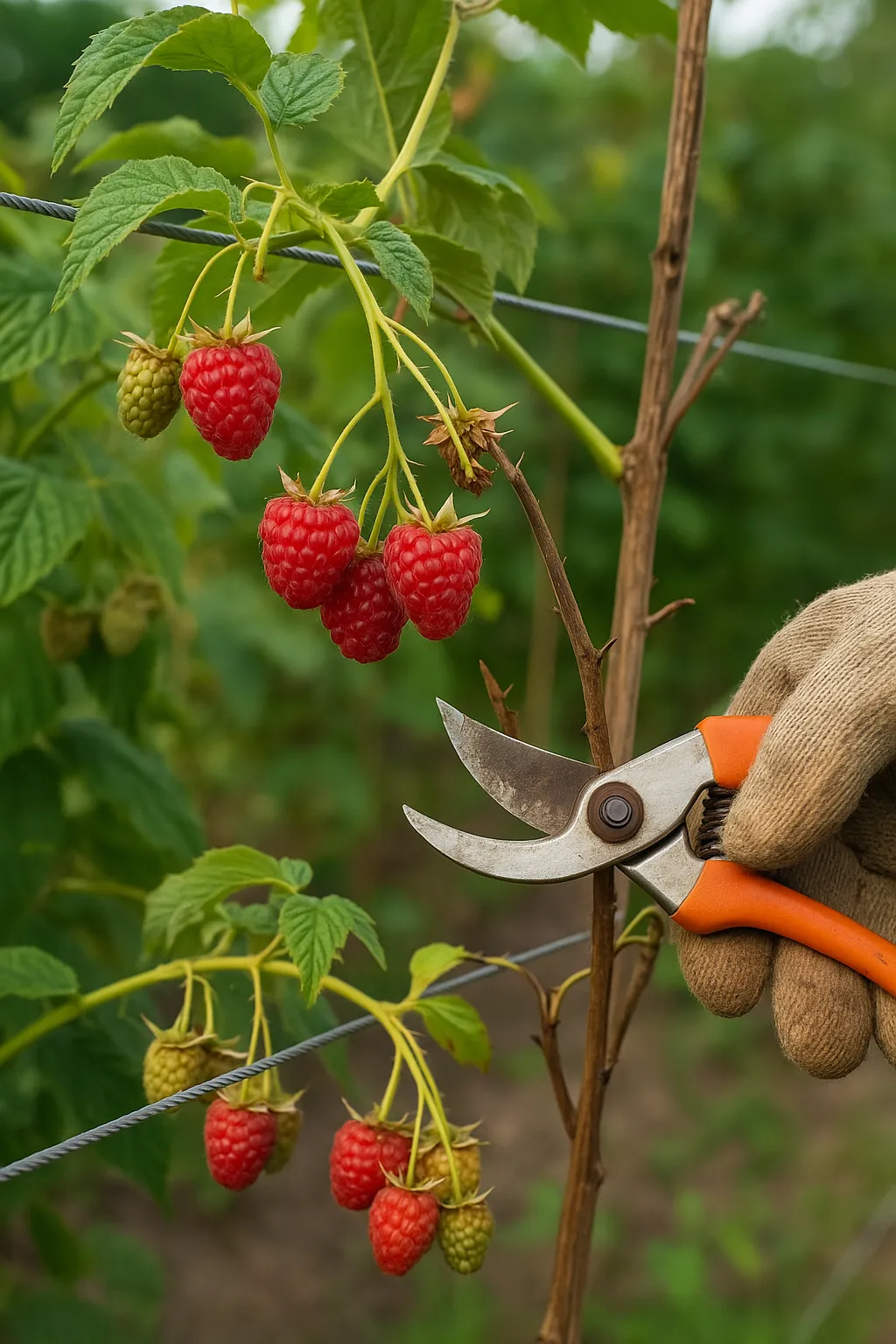Raspberry Pruning for Maximum Yield: The Complete Seasonal Guide
Learn how to prune raspberry plants for maximum yield. This detailed guide explains pruning techniques for summer-bearing and everbearing varieties, seasonal maintenance, and expert tips for healthier, more productive bushes.

Raspberry plants are among the most rewarding fruit-bearing shrubs to grow, offering sweet, nutrient-rich berries that flourish with the right care. One of the key factors determining the productivity and health of your raspberry bushes is proper pruning. Whether you are cultivating summer-bearing or everbearing varieties, pruning ensures stronger canes, improved air circulation, and abundant yields year after year.
Understanding Raspberry Growth Types
Before picking up your pruning shears, it’s essential to know which type of raspberry you are growing, as their pruning methods differ significantly.
Summer-Bearing Raspberries
These raspberries produce fruit once a year on second-year canes known as floricanes. The first year’s canes (primocanes) grow vegetatively and will bear fruit the following summer. After fruiting, these floricanes die and must be removed to make way for new growth.
Everbearing (Fall-Bearing) Raspberries
Everbearing raspberries produce two crops: one in late summer on the tips of current-year canes and another, lighter crop the following early summer on the lower parts of the same canes. This flexibility allows for different pruning approaches depending on whether you want one large fall crop or two smaller harvests.
Why Pruning Matters
Pruning is not simply about shaping the plant—it’s about optimizing light penetration, controlling disease, and ensuring that the plant channels its energy efficiently into fruit production. Without pruning, raspberry thickets quickly become tangled, reducing airflow and creating a breeding ground for fungal infections such as Botrytis or cane blight. Proper pruning:
- Increases sunlight exposure to developing fruits
- Improves airflow, reducing moisture-related diseases
- Encourages stronger, healthier cane development
- Extends the plant’s productive lifespan
- Boosts both the quality and quantity of the harvest
Tools and Preparation
To prune effectively and safely, you will need:
- Sharp, clean pruning shears
- Thick gardening gloves to protect your hands from thorns
- Disinfectant for cleaning your tools between cuts (to prevent disease spread)
- Twine or garden ties for supporting canes after pruning
Pruning Summer-Bearing Raspberries
Summer-bearing raspberries require two main pruning sessions: one after harvest and one during dormancy.
After Harvest (Late Summer)
- Identify the canes that have already borne fruit—they will appear brown, woody, and dry.
- Cut these dead floricanes down to the ground immediately after harvest.
- Remove any weak or damaged canes to prevent crowding.
During Dormancy (Late Winter to Early Spring)
- Thin the remaining healthy canes, keeping 4–6 of the strongest per linear foot of row.
- Shorten tall canes to about 1.2–1.5 meters (4–5 feet) to encourage lateral branching.
- Ensure that canes are evenly spaced and tied to support wires or trellises for stability.
Pruning Everbearing Raspberries
You can choose between two pruning strategies depending on your desired harvest pattern.
Option 1: One Large Fall Crop
This is the simplest method. In late winter, cut all canes down to ground level. This will encourage new primocanes to grow, which will fruit in late summer and autumn. This approach yields one heavy, high-quality crop per year and simplifies maintenance.
Option 2: Two Crops (Summer and Fall)
If you prefer two harvests per year:
- In late winter, only remove the top portions of the canes that fruited in the fall, leaving the lower two-thirds intact.
- These lower sections will produce a small summer crop the next year.
- After the second crop, remove those older canes entirely to make room for new growth.
Training and Supporting Raspberry Canes
To maximize fruit quality and ease of picking, it’s advisable to train raspberries on a trellis system. A simple two-wire trellis with wires at 60 cm and 120 cm (2 ft and 4 ft) above the ground works well. Tie canes loosely to the wires using soft ties, allowing for flexibility and airflow. Regularly check and adjust as the season progresses.
Seasonal Maintenance Tips
- Spring: Inspect for winter damage and remove any dead tips. Apply mulch to retain soil moisture.
- Summer: Prune out weak canes and manage suckers that spread beyond rows.
- Fall: For everbearing types, harvest and decide on your pruning method for the next cycle.
- Winter: Conduct major pruning during dormancy for both varieties.
Common Mistakes to Avoid
Even experienced gardeners make errors when pruning raspberries. Here are some to watch out for:
- Leaving too many canes, which leads to overcrowding and small berries
- Failing to remove spent floricanes after harvest
- Pruning too late in spring, which can delay fruiting
- Ignoring diseased or weak canes, allowing infections to spread
Encouraging Regrowth and Fertility
After pruning, nourish your raspberry plants with a balanced fertilizer or compost. Organic mulch such as straw or leaf mold conserves soil moisture and adds nutrients over time. Regular watering during dry spells is crucial—raspberries have shallow root systems that dry out quickly. Keep the area around the base weed-free to prevent competition for nutrients and water.
Long-Term Raspberry Patch Management
Raspberry beds tend to decline in productivity after 8–10 years if not rejuvenated. To maintain maximum yield:
- Replace old canes regularly to ensure fresh growth
- Divide and replant new sections every few years
- Rotate your patch location every decade to reduce soil-borne disease risk
Conclusion
Mastering the art of raspberry pruning is a balance between timing, technique, and plant observation. By understanding the life cycle of your raspberry variety and following consistent seasonal pruning routines, you can achieve bountiful harvests and keep your berry patch thriving for many years. A well-pruned raspberry bush is not only more productive but also a pleasure to manage—rewarding you each season with luscious, vibrant fruit straight from your garden.


